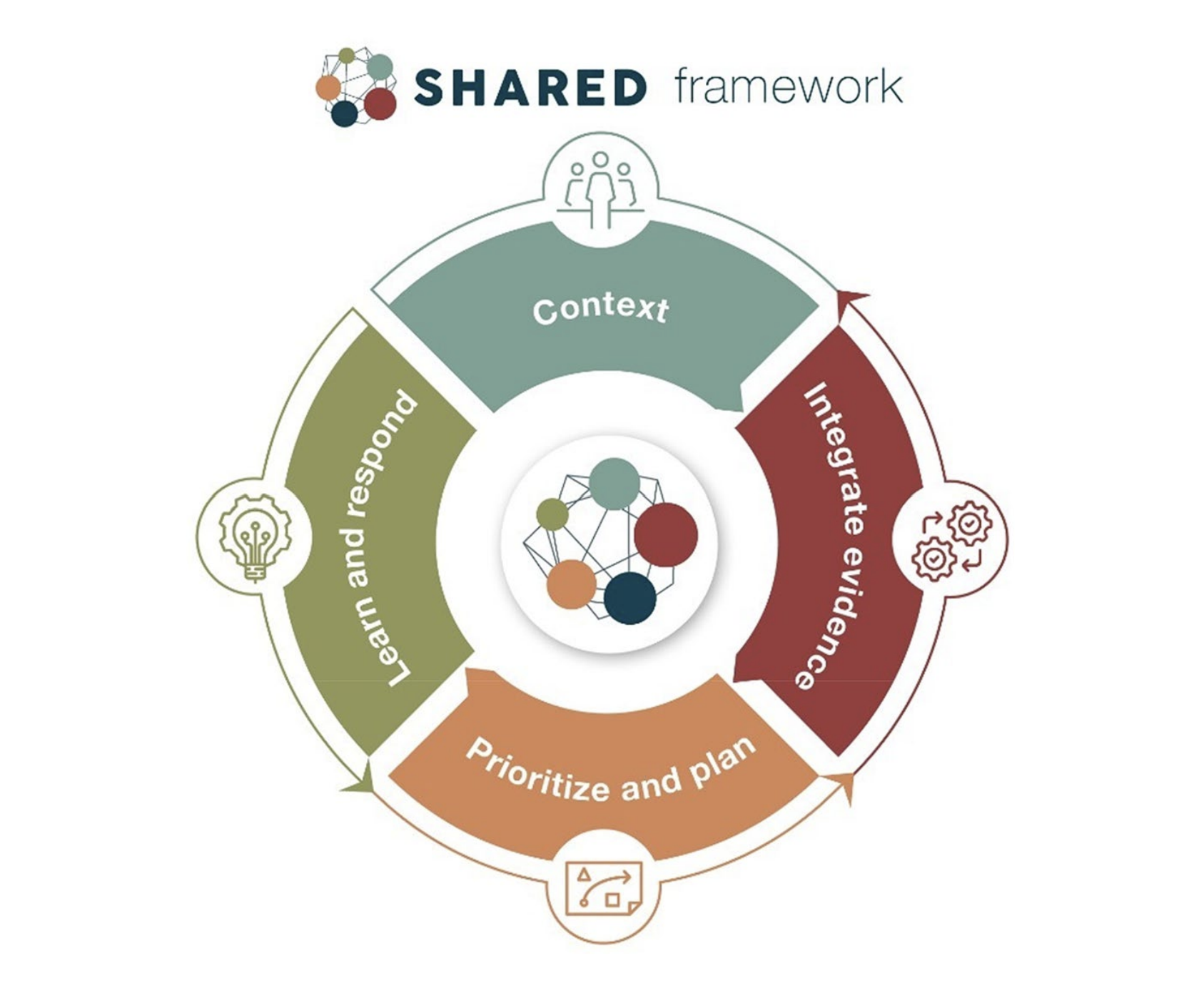K4GGWA Knowledge Platform - A Co-Designed Decision-Support Tool for GGW Action
K4GGWA Knowledge Platform - A co-designed decision-support tool for GGW action
- The K4GGWA Platform is central to the K4GGWA project.
- The K4GGWA Platform is a decision-support tool grounded in the SHARED Framework, that can be leveraged at every phase of the decision-cycle.
- Co-designed through stakeholder workshops and shaped by user-needs assessments, the K4GGWA Platform supports vertical and horizontal integration across the decision-making cycle, strengthening capacities and linkages between GGW stakeholders.
- Promotes participatory decision-making and monitoring, as well as bottom-up monitoring, reporting and verification activities (MRV) aligned to the GGW Accelerator Harmonized Monitoring and Reporting Framework (HMRF).

The Great Green Wall (GGW) initiative represents an ambitious effort to combat land degradation, restore ecosystems, and promote sustainable development across Africa’s Sahel region. Achieving these goals however, requires coordinated and evidence-based action.
Existing decision-support tools for monitoring and planning GGW restoration activities are often fragmented, lacking implementation support, and fail to meet the needs of diverse stakeholders operating at different governance levels. This hampers effective coordination, resource allocation, and the ability to deliver impactful restoration outcomes.
The K4GGWA Platform has been designed to address these challenges and provide an effective solution for evidence-based and participatory decision-making across scales.
What is the K4GGWA Platform?
The K4GGWA Platform is an integrated decision-support tool that combines citizen science and ground-validated data with remote-sensing analysis to empower stakeholders with actionable insights. Delivered through user-friendly dashboards on land health, technical and non-technical users alike can exploit landscape analytics for decision-making. Other features of the platform include the Stories of Restoration page, a content hub dedicated to linking dashboard insights to on-ground impact stories, and the News and Workshops page, which publicises K4GGWA related activities.
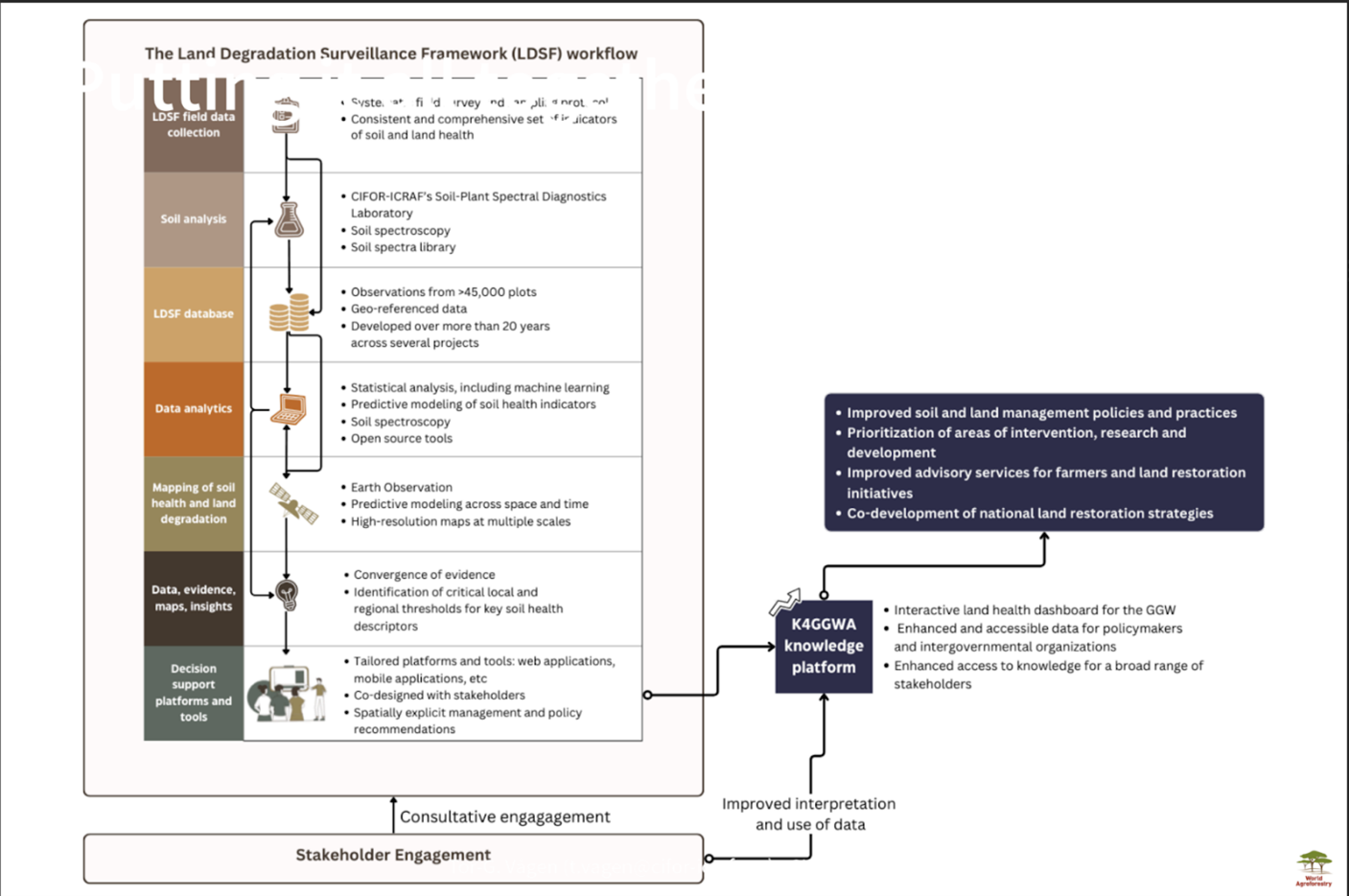
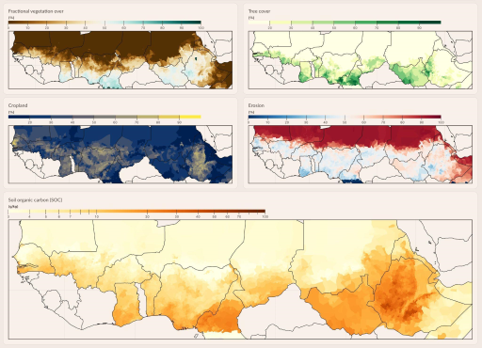
Responding to user-articulated needs, the platform provides maps on landscape health integrating data products from diverse sources and support materials in the form of guidance documents, tutorials and training events to ensure users can interpret and action dashboard insights.
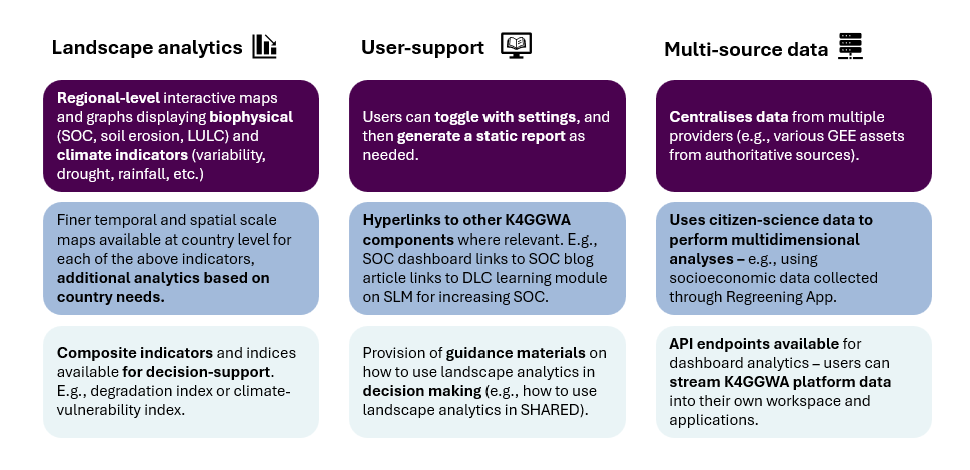
K4GGWA Platform – A human-centered design process
The K4GGWA Platform was developed using a human-centered design process, grounded in the Stakeholder Approach to Risk Informed and Evidence-based Decision-making framework, SHARED. Consisting of stakeholder engagement workshops, a capacity and needs assessment, and a tool stocktaking exercise, the platform was built with stakeholder input and user-centricity at the onset.
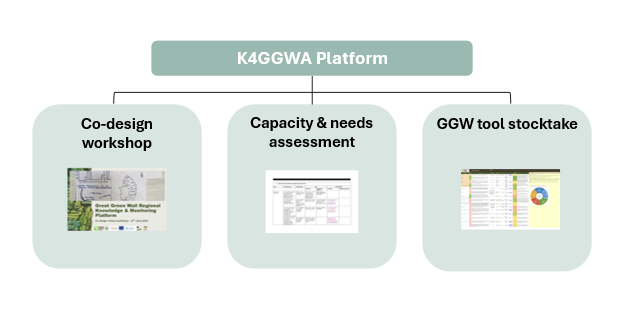

Capacity and needs assessment
Off the back of the GGW Implementation Report and GGW Accelerator Review, where critical weaknesses were highlighted in GGW implementation to-date, a targeted stakeholder capacity and needs assessment was conducted by the FAO with contributions from CIFOR-ICRAF. Results from the assessment reinforced the need for a strong evidence base upon which decisions for sustainable land management (SLM) can be made. In particular, stakeholders requested support data on land-health, as well as coordination support for knowledge sharing on best-practices.
K4GGWA Platform co-design workshop
The K4GGWA Platform Co-Design virtual workshop held in June 2024 presented a platform prototype to participants to gather feedback and recommendations on how it should look and what features might be useful. Prompts were used to steer the workshop and to collect focussed stakeholder input on key questions around what data would be helpful, and in what format, and how the platform can be shaped to meet user-articulated needs. Common themes raised during the workshop were that existing tools are fragmented and decentralised, often out-of-date and without clear use-case or implementation support. Stakeholder input from this session was used to further refine the platform design.
GGW-dedicated tools stock take
A stocktaking exercise for existing GGW-dedicated decision-support tools was carried out to identify critical gaps and design flaws in the existing toolbase. An unstructured literature review was conducted to formulate criteria against which the effectiveness of each tool could be assessed. Six key design principles for an effective decision-support tool were identified: accessibility, transparency, usability, sustainability, scalability and adaptability. References shaping the criteria set can be found in the source document.
An evaluation of existing tools revealed critical deficiencies in particular for platform usability, sustainability and scalability. For example, while many tools provide pre-processed, easy-to-visualise data products, an immediate use-case is often not apparent, and guidance materials supporting decision-making are lacking. Or, transparency around data provenance and methodologies may be unclear, precluding users from adapting and scaling data products to their unique use-cases, or participating in the decision-making process altogether.
The K4GGWA Platform and decision-making
Integrated landscape management and restoration activities behind GGW action are driven by complex decision-making contexts. Decision-contexts may include policymaking, target-setting, intervention design, and adaptive management. The K4GGWA Platform is designed to support evidenced-based decision-making across different contexts, adaptable to different stakeholder needs and technical capacities.
But why is that important?
In the context of decison-making for sustainable land management and intervention, assessments of land health often suffer from (i) disagreements about the definition of land degradation/land health; (ii) an abundance of fragmented indicators that are infeasible to measure and hence operationalise and (iii) a lack of rigorous science-based indicators and analytical frameworks2^. By consolidating complex environmental data into comparable indicators, accessible in visual formats through decision dashboards, stakeholders from diverse backgrounds can participate in informed discussions around what such information is conveying and co-create possible solutions.
At varying governance levels, dashboards serve as a unifying interface that facilitate vertical integration of decision-making. At the local level, they enable participatory approaches by providing communities with clear, visual evidence to advocate for their needs and perspectives. At regional and national levels, they help harmonise policymaking by offering a shared, data-driven understanding of landscape health, fostering collaboration across institutions and sectors.
Intersectoral collaboration benefits from dashboards as they provide a common platform for decision-makers across agricultural, environmental and other relevant sectors to analyse and interpret data collectively, fostering coordinated strategies. Interinstitutional decision-making is strengthened through the standardised data presentations that dashboards offer, ensuring that institutions operate with a unified understanding of landscape health metrics.
Embedding evidence into decision frameworks such as SHARED enables holistic, multi-scalar governance in landscape management. Decision dashboards promote coordinated action that balance ecological, social, and economic goals, ensuring that decisions are both scientifically sound and inclusive of stakeholder voices.
To learn more about the SHARED methodology, check out the new SHARED module on the Digital Learning Campus. Users interested in learning more about how to adapt dashboard analytics to their unique decision-contexts can check out the SHARED webpage.
The K4GGWA Platform aims to enhance coordinated and participatory action in the Great Green Wall (GGW) initiative by aligning stakeholders around data-driven insights. As a tool for transparent planning, restoration prioritisation, and impact tracking, the platform supports collaboration and trust among stakeholders, ensuring objectives under the GGW, such as improved land health, livelihoods, and climate resilience, can be measured and monitored.
Footnotes
Neely, C.L., Bourne, M., Chesterman, S. et al. (2021) Inclusive, Cross-Sectoral and Evidence-Based Decision-Making for Resilience Planning and Decision-Making in a Devolved Context. Eur J Dev Res 33, 1115–1140. URL: https://link.springer.com/article/10.1057/s41287-021-00410-3#citeas, DOI: https://doi.org/10.1057/s41287-021-00410-3↩︎
Vagen, T.G., et al. (2018) Spatial assessments of soil organic carbon for stakeholder decision-making – a case study from Kenya. SOIL, 4(4), 259-256. URL: https://soil.copernicus.org/articles/4/259/2018/, DOI: https://doi.org/10.5194/soil-4-259-2018↩︎
